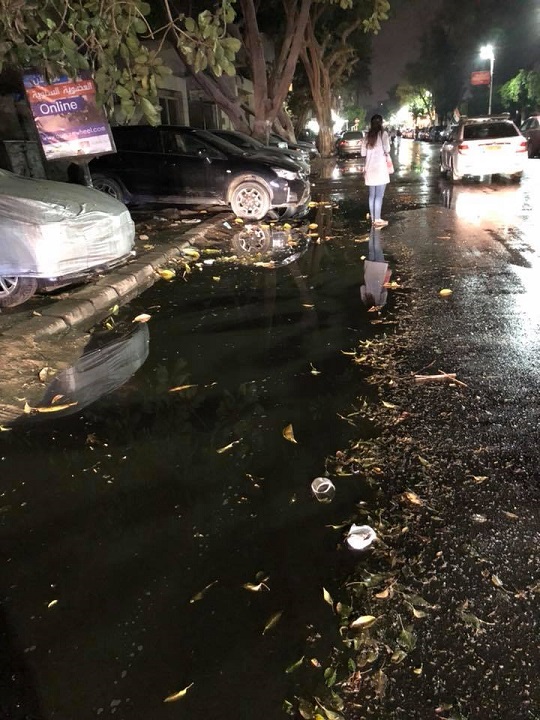Rain is rare in Egypt, because of its location in the Sahara desert. In my previous visits to Egypt, the “rain” I experienced was similar to what we might call “sprinkling” in my home in the U.S., and it lasted only a short time. The average rainfall in Cairo for April is 1/4 inch (7 mm) in the entire month.
So, imagine my surprise when we experienced two days of genuine thunderstorms with heavy rain on April 24 and 25, 2018 while I was in Cairo! And then, a week later, a miniature thunderstorm came to Luxor on May 1!
Egypt receives rain so rarely that a major rainfall is a big event. Here are some of the consequences that happened in Cairo’s 2-day storm:
- There are no storm drains, so streets quickly became flooded.
- Cars stalled when the flood waters overwhelmed them.
- People didn’t know how to drive on the rain-slick roads.
- Building roofs leaked, because they normally don’t need to be watertight. I was eating supper at Felfela restaurant with rain dripping on my head! But it was okay, because I was enjoying the sound of the storm.
- Events were canceled due to rain leaking through roofs. For example, the Balloon Theater canceled a performance by the Kowmiyya dance company one evening due to rain.
- Parts of Cairo’s Ring Road were shut down for several hours due to flooding. Many people needed to sleep in their cars.
- The road closure caused traffic snarls throughout Cairo as people tried to find other ways to get home.
- Some buildings and bridges collapsed.
- Trains were delayed.
In Luxor, the “thunderstorm” consisted of one flash of lightning and one brief rumble of thunder, followed by some sprinkling. Therefore, we didn’t have the above problems that come from heavy rain. However, the locals were so worried about the storm that they insisted that the members of our group who intended to walk somewhere take a bus instead.
I live in a part of the U.S. that experiences frequent thunderstorms, with heavy rains. My dad used to call these storms “toadstranglers”. Therefore, I have always taken storm drains, culverts, and watertight roofs for granted. It never occurred to me that other places would forego such infrastructure. It makes sense, of course. Why would you need to build watertight roofs and storm drains in the Sahara desert? I can understand why it might be viewed as an unnecessary expense in a place that gets thunderstorms so rarely.
